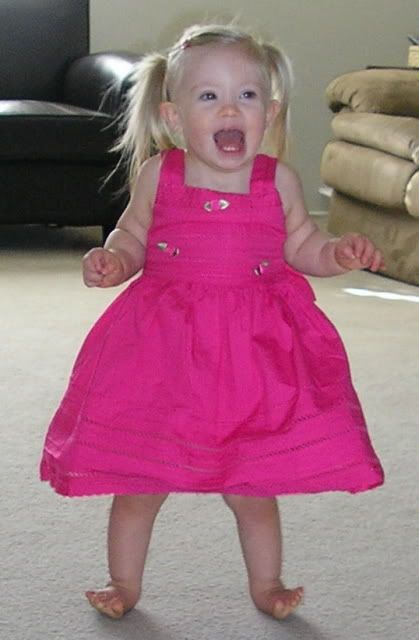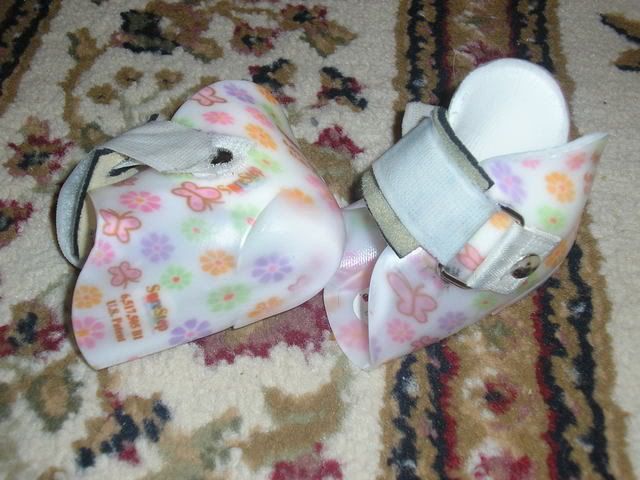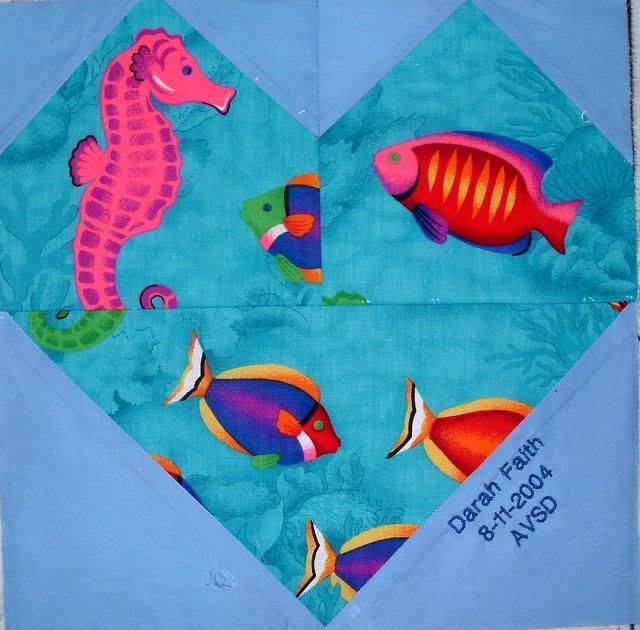Before You Potty Train Your Child
I have felt so much pressure to potty train my daughter. I will be honest. There is a big part of me that has wondered why it’s so important to potty train early. Diapers, in my opinion, are much easier than having to stop everything to take your child to the bathroom and potty training is just one more factor, thrown in there with nap time and meal time, in strategically planning your outings. We’re busy, and in my free time with my daughter, teaching her shapes, colors, and how to count seem much more important than learning to pee-pee in the potty. While I would rather work on other developmental goals, I do know that it is important (and cheaper) for Darah to be potty trained. Potty training brings about more independence for her.
Recently, at the start of 2008, I determined that 2008 was the year Darah was going to be potty trained. I have read “Potty Train Your Child in Just One Day,” and gone to countless sites about potty training. I have taken the “Is your child ready?” quizzes and determined that she is. I have tried a few days of having her run around without bottoms for a day and taken her every 10 minutes to the potty. I have made the sticker chart, decorated the bathroom, charted her elimination pattern (when she pees and poops) and I have incorporated potty time in her schedule at school with her teachers. I’ve come to the place though where I am now slowing down!
So, like in all mountains I have climbed, I have decided to focus on one step at a time. We are at the place where we are “pre-potty training” Darah. By pre-potty training, I mean that I am training her to go through the whole routine of potty time, without the actual elimination in the toilet.
Preparing your child for potty training:
- Desensitize your child to the bathroom. The bathroom is unlike most rooms in the house, so allow your child in there with you frequently.
- Whenever you go, take your child. Celebrate when YOU go to the bathroom and allow your child to join in that celebration.
- Empty your child’s poopy diaper in the toilet. Explain to your child that his or her poo poo belongs in the toilet and flush it together.
- Change all diapers in the bathroom.
- Teach your child what the potty time routine looks like, including: lifting up the toilet lid cover, pulling down your pants, sitting on the toilet for a while, wiping, flushing, pulling back up your pants, washing your hands, and closing the bathroom door when you’re finished. If your child can follow this whole routine, once you start the elimination training, half the battle is already won!
- Teach the concept of “wet and dry” to your child. When their diaper is wet, let them touch it and explain that it’s wet (washing their hands right after, of course.) When their diaper is dry, let them feel the dryness and explain to them that they are dry.
- Don’t force your child to explore the bathroom. You do not want your child to become aversive to the bathroom, or the toilet.
- Always have a good attitude about potty training. Just like all developmental milestones, potty training is a process that will not be without accidents. When a child is learning to walk, parents don’t scold him when he falls down, they encourage him to get back up and try again. Your child will pick up on your frustration with potty training and will decide not to cooperate, and that my friend will be a very tough battle!
With the huge help of Darah’s teachers at school, Darah has learned the potty time routine. She independently pulls down her pants, sits on the toilet, wipes, flushes, and washes her hands. She has not begun eliminating in the toilet yet, except for a few random times we’ve caught her! However, I feel that every day we go through the potty routine with her, we are getting closer and closer to once and for all toss the diapers, put on the Little Mermaid big girl panties, and go for it!
What’s next?
My plan right now is to continue having “potty time” several times a day, and hopefully we will “catch” her when she needs to go more frequently and celebrate those moments. I think that with Darah, we are going to probably need to schedule train her after next. By schedule training, I mean that we figure out the times that she needs to potty during the day and we take her to the bathroom to do her thing. Shortly after she is schedule trained, I am hopeful she will then spontaneously start asking to use the toilet at appropriate times. I will then write a post here on The Mom Crowd and give you all my insider info on the next steps!
Dr Phil’s Potty Training Method
Potty training a child with special needs
What is your experience with potty training? Did/Do you feel the same pressure I’ve felt about potty training? Do you think early or late potty training is better? Any good info, books, or sites to share? Let’s talk POTTY!! ![]()
Share the fun: Email + Del.icio.us + Digg + Technorati










